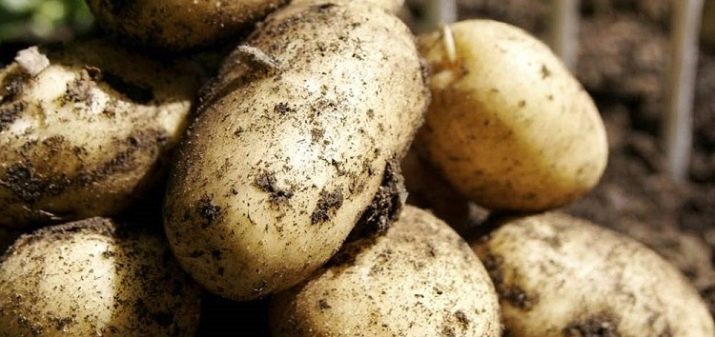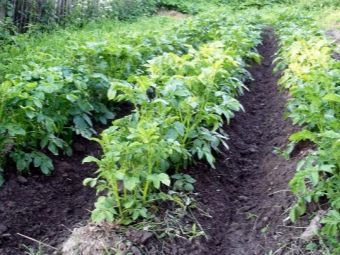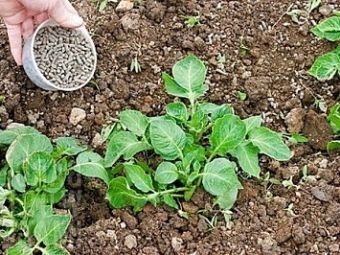Description of the potato variety "Chaika"

Both large farmers and ordinary gardeners have long appreciated the benefits of growing vegetables such as potatoes on their own land.After all, it has good yield, unpretentious care and is part of a set of very tasty and healthy dishes. Therefore, it is worth considering the description of the potato variety "Chaika", which has long won the respect of the gardeners of the Volga basin.
History reference
The potato “Chaika” was developed on the Falenskaya breeding station located in the Kirov region in the village of Falenki, famous for many other breeding achievements. This variety is a hybrid, and was obtained by long-term crossing and cloning of potatoes of two other known varieties - Kingston and “Shurminsky 2”.
In the state register of the Chaika varieties permitted for breeding on the territory of the Russian Federation was included in 2005
Characteristics and description of the variety
Since the growing season of “Seagulls” can reach 120 days, this variety is usually referred to as medium late. It is usually planted in May, and the harvest is expected in early September.
Bushes "Seagulls" have a medium or greater height. The type of their growth is semi-upright, which means, at first, their stem is vertically flat, and then as the length increases, it gradually begins to lean toward the ground. The number of tubers in one bush varies from 6 to 11. The variety bushes are covered with medium and large green leaves, and its flowers have an average or large white corolla.
Fruits of a grade "Seagull" are usually oval-rounded in shape, covered with a smooth yellow peel with medium-deep and deep eyes. The flesh of such potatoes has a pleasant light yellow color with a cream shade. The weight of one mature fruit of this variety is usually from 70 to 125 grams. Each tuber contains from 12 to 15% of starch - depending on the conditions in which the vegetable was grown.
The main advantages of this variety are excellent keeping quality (up to 92%), excellent taste and good yield, which usually ranges from 242 to 414 centners per hectare (or from 2.42 to 4.14 kg / m2). The maximum recorded yield of the "Seagull" was as much as 454 centners per hectare.
According to the preferred climate, this breed is well suited to cultivation in Ukraine, Moldova and many regions of Russia, especially Volgo-Vyatka and North-West.
Landing
Before planting the “Seagull” tubers, they should be treated with fungicides (for example, formalin), if possible, and then germinate at a temperature of about 17 ° C to obtain sprouts 1 centimeter long.
The soil in the place chosen for planting potatoes must be soft, preferably sandy, otherwise the fruit will not be able to achieve optimal size, and its shape will suffer significantly. In this area should not be shaded. The “Seagulls” tubers need to be buried to a depth of 8 to 10 centimeters, and the standard sowing scheme used for this variety is a distance between rows of 70 cm with a distance between tubers in a row of 35 cm.
Growing up
The breed is resistant to viral diseases of vegetables and potato cancer. But to late blight this plant is much less resistant than many other hybrids. Sometimes its bushes and tubers suffer from various fungal diseases, which are collectively known as scab. Among the pests, it is particularly easy for its planting to strike a golden potato cyst nematode. Do not disdain this variety and the eternal enemy of potatoes - the Colorado potato beetle.
In this regard, it is necessary to take standard measures to combat diseases and pests. To fight nematodes, it is sufficient to regularly loosen the soil around potato beds, and effective systemic preparations (“Masterpiece”, “Prestige”) or safer biological ones (for example, Bitoxibacillin) will help best of all from the Colorado potato beetle.
At the first signs of scab, the soil needs to be treated with a fungicide, and for its prevention it is worth using acid fertilizers and changing the position of potato beds once every two years.
For the treatment of late blight, you can spray bushes with copper sulphate.
The “seagull” is quite sensitive to the “neighbors”, therefore weeding its beds should be done regularly.
Top dressing should be made in this sequence:
- phosphate and potash fertilizers are applied in the fall after harvest in preparing the soil;
- nitrogen fertilizers are applied only during the sprouting of the bushes in the spring;
- Complex fertilizers are the only ones suitable for application during the growing season.
Application
Due to the low starch content and excellent taste of the “Seagull” fruit, it is suitable for almost all main potato dishes, as its tubers do not boil soft for a long time.
Good "Seagull" and stewed or fried, so it is often used for cooking homemade chips or french fries. Due to the highest level of keeping quality, this potato is ideal for creating stocks for the winter.
Reviews
Most farmers who grow “Chaika” on an industrial scale, in their reviews, note the high yield of this variety and its excellent storage capacity. Also, many argue that caring for a culture is not difficult, and even a beginner can cope with it.
The main disadvantages of the “Seagull” farmers call the need to protect its landings from diseases and pests.
Summer residents mostly note the excellent taste of dishes prepared from these vegetables, and among the shortcomings they speak about the possibility of the appearance of tubers of irregular shape.
In the next video you are waiting for the secrets of growing potatoes.

























